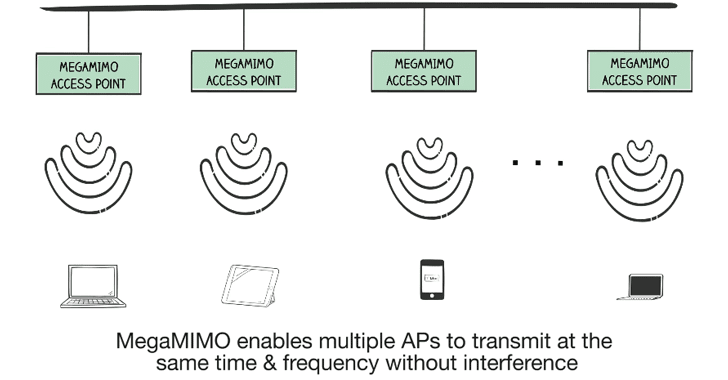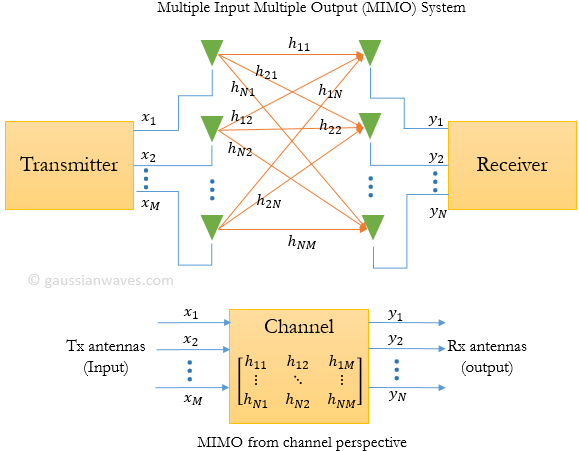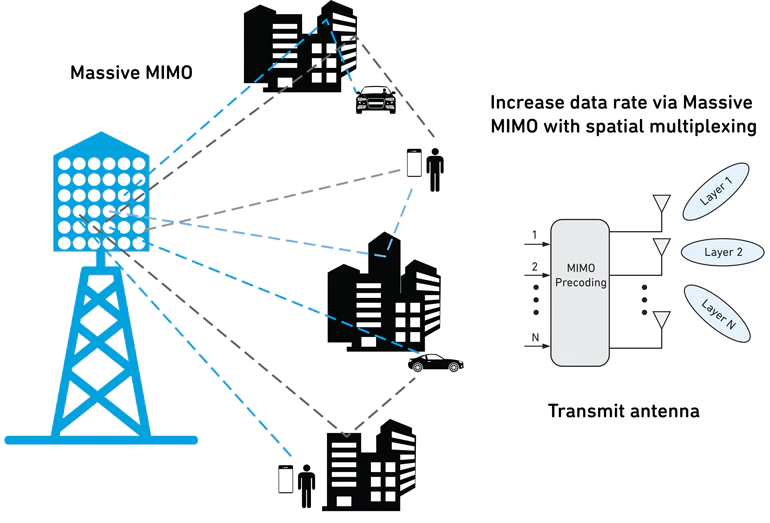The perplexing challenge of interference plagues wireless communication systems, particularly in the context of Multiple Input Multiple Output (MIMO) systems. The placement of antennas and utilization of techniques to mitigate interference assume utmost importance in elevating MIMO system performance. With multiple antennas used for simultaneous signal transmission and reception over the same frequency band, potential interference between different channels or antennas is a persistent issue.
Enter Massive MIMO technology – a beacon of hope promising to alleviate this problem plaguing wireless communications. By leveraging an extensive number of antennas at both base station and user equipment levels, it augments spatial diversity while improving signal quality. Beamforming approaches enabled by Massive MIMO facilitate eliminating inter-cell interference by channeling signals towards specific users.
In addition to beamforming strategies, Interference cancellation is another technique employed for diminishing the impact of interference on MIMO communication systems. This involves estimating interfering signals and subtracting them from received signals before decoding them – algorithms catering to uplink and downlink transmissions have been developed with the primary goal being system capacity enhancement coupled with reliability improvement.
Propagation characteristics also play a crucial role in antenna array design as well as devising effective methods for reducing interface challenges faced within MIMO systems. Environmental conditions can significantly influence how signals propagate through space; understanding these propagation characteristics assumes criticality when optimizing system performance under diverse circumstances.
Comprehensively addressing challenges posed by interfaces within MIMO systems necessitates taking into account factors such as antenna placement, massive MIMO technology, propagation characteristics along with advanced mitigation techniques like beamforming strategies or cancellation algorithms among others. Through optimized solutions systematically applied we can achieve enhanced performance from our wireless networks even amidst unnecessary interferences caused by other devices operating on similar frequencies around us .

Antenna Placement and Interference Reduction in MIMO Systems
Contents
- 1 Antenna Placement and Interference Reduction in MIMO Systems
- 2 The Role of Massive MIMO in Interference Mitigation
- 3 Interference Cancellation Techniques for MIMO Communication
- 4 Propagation Characteristics and Interference in Antenna Arrays
- 5 Multi-Cell Interference and its Mitigation in Massive MIMO Systems
- 6 Optimization Approaches for Interference Reduction in Wireless Communications
- 7 Simulation and Analytical Results for Interference Reduction in MIMO Systems
The placement of antennas in MIMO systems is an absolutely crucial aspect that has a direct impact on the system’s ability to reduce interference. The antenna array must be designed and positioned with utmost precision, ensuring seamless transmission and reception with minimal disturbance from external sources. This task requires careful consideration of various factors, such as frequency, RF power levels, and receiver sensitivity.
However, things get significantly more complicated in multi-cell environments where the number of transmitting and receiving antennas increases dramatically. In such cases, even massive MIMO can struggle to keep up with the inter-cell interference while maintaining spectral efficiency. But fear not! Massive MIMO has emerged as an effective solution that uses hundreds or thousands of antennas at both ends to tackle this issue head-on.
Alternatively, we could resort to interference cancellation techniques that involve subtracting unwanted signals from the received signal before decoding it. FIR filters are commonly used for this purpose as they offer precise control over filtering parameters.
To cut a long story short: antenna placement and interference reduction are critical components of wireless communications – especially in MIMO systems – requiring careful optimization approaches like those discussed above so our networks can operate efficiently without any undue signal degradation caused by pesky external factors like noise or electromagnetic radiation interfering with their capabilities!

The Role of Massive MIMO in Interference Mitigation
The emergence of Massive MIMO systems has left many perplexed, as this promising technology offers a burst of hope for interference mitigation in cellular communication. Notably, the IEEE 802.11ac and LTE standards have harnessed massive multi-input multi-output (MIMO) techniques to improve transmission rates while reducing interference – leaving many wondering how such feats are even possible.
Through its use of multiple antennas at both transmitter and receiving antenna ends, Massive MIMO offers null steering and spatial filtering capabilities that seem almost too good to be true. The ability to increase base stations while simultaneously reducing inter-cellular interference is nothing short of mind-boggling; achieved through the utilization of orthogonal radio resources like time, frequency, and code domains for different users.
Perhaps most impressive about this technology is its capacity to significantly increase channel capacity without necessitating additional spectrum or power. This wonder-worker achieves optimal performance through several optimization approaches aimed at minimizing interferences between cells while maximizing spectral efficiency – including beamforming techniques that adjust phase and amplitude signals transmitted from each antenna element towards specific directions.
Recent studies have shown that Massive MIMO can yield up to 10 dB improvement in SINR compared with traditional single-antenna systems under high traffic loads – a testament to just how transformative this technology really is! In summary, implementing Massive MIMO requires careful consideration given various factors such as antenna placement, propagation characteristics among others – but it holds exceptional promise for enhancing wireless communications across all industries globally!
Interference Cancellation Techniques for MIMO Communication
Spatial filtering, a widely used method for interference cancellation in MIMO communication, involves an array of antennas that computes a beamforming vector to improve the signal-to-noise ratio at the receiver. But wait, there’s more! Another approach is time division duplexing (TDD), which allows for uplink and downlink transmissions on the same frequency band through precise synchronization between base station and user equipment. This technique offers greater flexibility than frequency division duplexing (FDD) but requires careful timing coordination. And that’s not all – advanced signal processing algorithms like LMMSE equalization or zero-forcing precoding can also be employed to manipulate waveform signals transmitted from different antennas to effectively mitigate multi-path fading effects caused by propagation characteristics in wireless channels. With these options available, interference mitigation in MIMO systems has never been more versatile or customizable depending on individual needs of specific applications or scenarios.
Propagation Characteristics and Interference in Antenna Arrays
The perplexing nature of propagation characteristics and interference in antenna arrays poses a significant challenge to the optimization of wireless communication systems. Mitigating interference is vital for improving signal quality and minimizing errors that arise from it. It can stem from various sources, including other transmitters, reflections, or even environmental factors such as weather conditions.
Bandwidth plays a pivotal role in determining the capacity of wireless communication systems. To optimize bandwidth utilization, time-division duplexing (TDD) is often employed to enable transmission and reception on the same frequency band. Additionally, antenna arrays are utilized to enhance signal-to-noise ratio (SNR) which leads to increased system capacity through spatial diversity.
Massive MIMO systems commonly encounter multi-cell interference when multiple cells use the same frequency band. Finite rate feedback techniques offer an optimal solution by optimizing beamforming weights while reducing inter-cell interference. Broadband optimization approaches have also been proposed as viable solutions that improve system performance by mitigating narrowband effects on overall throughput.
In conclusion, comprehending propagation characteristics and identifying sources of interference in antenna arrays remains critical for telecommunication networks’ optimization. Effective mitigation techniques like TDD operation, antenna array design methods; multi-cell management strategies; finite-rate feedback processes; broadband optimization approaches are all key enablers towards achieving better performance levels for wireless communication systems today! Li et al., Zhang et al., among others with their extensive research provide valuable insights into this field – something we should all be grateful for indeed!
Multi-Cell Interference and its Mitigation in Massive MIMO Systems
The challenge of Multi-Cell Interference looms large over wireless communication systems, particularly in the realm of Massive MIMO. The pernicious duo of multiuser interference and inter-cell interference can wreak havoc on the uplink received signal, severely compromising its performance. However, beamforming techniques offer a glimmer of hope by honing in on specific directions to enhance signal quality while simultaneously curbing interference from other quarters.
But here’s where things get really interesting: circuit design holds the key to improving system throughput and reducing multi-cell interference in Massive MIMO Systems. At an international conference on communications, researchers unveiled their groundbreaking work on designing high-performance circuits that facilitate efficient processing of channel information for beamforming algorithms. These cutting-edge circuits can operate across multiple frequency bands and support advanced signal processing techniques for mitigating fading channel effects – talk about bursting with potential!
There’s more though – propagation characteristics also exert a significant influence on multi-cell interference in antenna arrays. Take Rayleigh fading channels, for instance; they introduce unpredictable fluctuations in received signals that have far-reaching ramifications for overall system performance. But fear not! By leveraging spatial diversity via cleverly designed beamforming algorithms and combining multiple antennas at both base station (BS) and user equipment (UE), we can effectively neutralize this type of interfererence without jeopardizing BSS operation or UE mobility requirements. Mind-boggling stuff indeed!
Optimization Approaches for Interference Reduction in Wireless Communications
The world of wireless communications has been set ablaze with the emergence of optimization approaches for interference reduction. As the demand for reliable and high-speed wireless services continues to soar, experts have honed in on techniques such as channel estimation, FDD/TDD systems, and identically distributed outage-constrained power allocation.
Channel estimation is a powerful approach that seeks to accurately estimate channel parameters through methods like least squares, maximum likelihood, or minimum mean square error. And while these are great options in their own right, it’s hard to ignore the superior performance achieved by the inverse duality constraint technique.
FDD and TDD systems are two other approaches being deployed to combat interference between MIMO antennas by separating uplink and downlink transmissions. The former allows signal transmission at varying frequencies simultaneously while the latter enables sending signals at the same time but with different directions.
But perhaps one of the most intriguing optimization techniques is identically distributed outage-constrained power allocation – an algorithm designed to improve MIMO performance by reducing interferences between wireless signals from various users within a network. This method distributes power optimally among all transmitters so that each receiver gets sufficient energy while maintaining a certain level of outage probability.
In summary, employing cutting-edge optimization techniques is critical when designing next-generation communication systems capable of meeting ever-increasing demands for high-speed data transmission over wireless networks without compromising reliability or service quality requirements. It’s imperative that we continue exploring new strategies for interference reduction given its crucial role in improving signal quality and minimizing disturbances amongst multiple antennas or devices within a network.
Simulation and Analytical Results for Interference Reduction in MIMO Systems
The perplexing issue of interference in MIMO systems has been tackled through the use of simulation and analytical methods. These approaches aim to maintain connectivity and spatial multiplexing while minimizing interference, which is particularly beneficial for cellular mobile networks with multiple users transmitting data simultaneously.
At the recent International Symposium on Wireless Communication Systems, researchers presented a bursty technique that cancels out interfering signals from other devices to improve error rates in wireless area networks. The low-complexity approach showed significant improvements in network performance by reducing interference.
Another study focused on mitigating multi-cell interference in massive MIMO systems using an analytical method. The researchers optimized antenna placement and power allocation across multiple cells to minimize inter-cell interference while maximizing throughput per second. This approach effectively reduced multi-cell interference without compromising network capacity or coverage.
In conclusion, utilizing simulation and analytical methods provides valuable tools for understanding and mitigating the perplexity of interference in MIMO systems. Researchers can develop optimized solutions that balance high-speed connectivity with minimal signal degradation caused by neighboring devices or cells through these bursty techniques.


